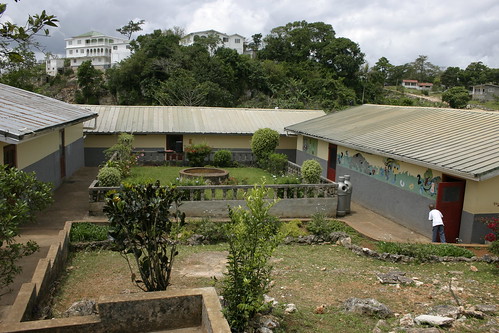Blog Posting #1
My own personal journey for obtaining a
doctorate in education comes from a deep desire to be part of the solution of
improving the education model that will drive our schools to meet the needs of
learners. Our society is rapidly
evolving from both technological and social standpoint and educators need to
address and embrace these changes in a thoughtful manner so as to better
prepare students for the 21st century.
Whereas traditionally learning was believed
to take place in a classroom and students would reinforce their learning
outside, technology has provided a catalyst to facilitate the expansion of the
learning environment to move beyond the traditional classroom. Hoadley and Haneghan recognize and discuss this
in their article, The Learning Sciences: Where they came from and what it means
for instructional designers, and comment on the importance of educators
committing to build solutions for learning to take place both in and out of the
formal school setting (Hoadley & Van
Haneghan, 2011, p. 11).
Technology is providing new tools to allow learners to become more
active and in control of their learning.
A student can sit on a bus and review audio notes from the mobile MP3
players, watch a YouTube video from the comforts of his/her computer or watch
an educational television show on a number of school topics for example. Technology is helping to drive a learner’s
curiosity to learn by providing the method to obtain knowledge.
I agree with their
belief that the education model of requiring students to be able to regurgitate
copious amounts of facts needs to be replaced with one that facilitates
students obtaining a deeper understanding of knowledge and skills. I can’t help think how more districts are
adopting the American model of standardize testing rather then moving towards
students developing their ability to problem solve, seek knowledge and being
more in control of their learning—I don’t believe standard testing facilitates
this.
Another area that
needs to be recognized is the role of the educator and the skill level that
she/he bring to the learning process. In
Bransford, Brown, Cocking’s article, How people learn, they recognize the role that successful
teachers have on learning. The adoption of technology as a
teaching tool needs to be based first on the learning/teaching process or there
is a risk of the technology becoming more of a toy rather than that as a tool (Bransford, J. D., Brown, A. L., & Cocking, R., 2000 p.6)
Technology has the opportunity facilitate
a deeper learning for the learner as the memorization of facts isn’t is as
important as he/she can Google facts when necessary. As discussed by Bransford,
Brown, and Cocking, technology not only has affected how learners are learning
but the high literacy skills needed in society today. Another benefit or effect from the adoption
of technology is that learners want more freedom and control over their
learning. They are using their tools to
seek answers and solutions in a just in time manner. I see this as an important benefit that helps
facilitate developing passionate life long learners. As discussed in the article, it means that we
need to change that is working with students—we need teachers to view
themselves as facilitators that work with
students rather than pushing knowledge on
to learners. By moving towards guiding
students, we can guide students towards a deeper understanding of any given
knowledge.
In the past five years, I have been taking
on a great role as a PD trainer. I offer
workshops in a variety of web based learning tools. At the beginning of my workshops I always
like to give the analysis that each WBLT is very much like a pencil
crayon in a pencil case: sometimes we
need a red pencil crayon and sometimes we need a purple one. The important part is being able to recognize
and identify the correct tool/technology for the job. Our readings so far definitely confirm the
importance for both the learner and educator to be able to do this.
Works
Cited
Bransford, J. D., Brown, A. L., &
Cocking, R. (2000). How people learn:
Brain, mind, experience, and school (Expanded edition). Washington, DC:
National Research Council. PDF copy downloadable at http://www.nap.edu/catalog.php?record_id=9853#toc (Chapter 1 and selected pages).



